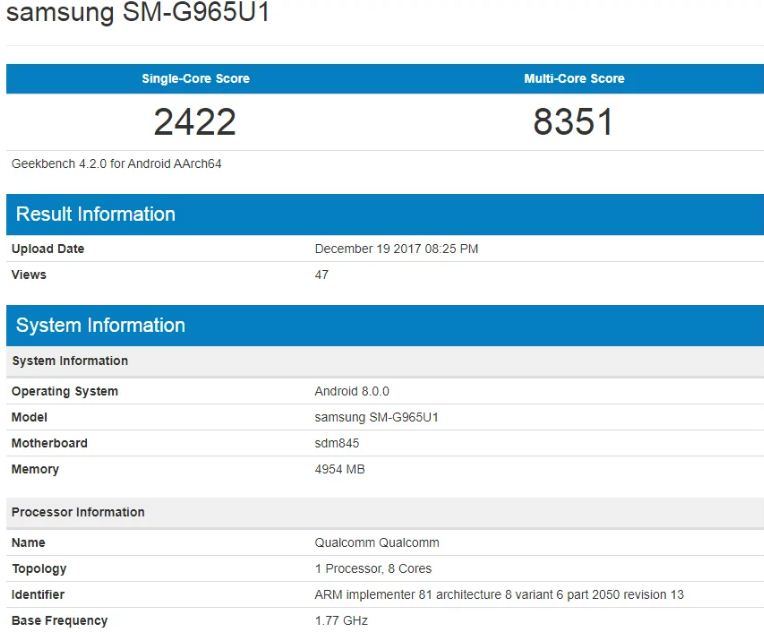Finally, the Samsung Galaxy S9+ device has been benchmarked by the famous benchmarking site, Geekbench. The news and anticipations surrounding the same device had already confirmed the existence of this upcoming Samsung high-end smartphone. While Galaxy S9 has been a havoc amidst swirling rumors, we already know that the company is also developing Galaxy S9’s premium smartphone, dubbed the Samsung Galaxy S9+.
The report indicates quite a many things about the features of the upcoming Galaxy S9+. Specifically, it was yesterday when this smartphone got benchmarked with a model number Samsung SM-G965U1. Now, how do we rely on the fact that it is the Samsung Galaxy S9+? From the reports so far, the SM-G965 model number has been considered to be the forthcoming Galaxy S9+ smartphone.

The Samsung Galaxy S9+‘s benchmark score reveals that the smartphone is capable enough of delivering a mammoth performance. In the single-core test, the device scored 2,422, while on contrary, the multi-core test score has been recorded with 8,351 points. Apparently, this is the initial time when a Samsung smartphone has breached 2,000 marks in the single-core test, reports GizmoChina. talking about the multi-core testing result, it has been one of the best, when it comes to Samsung smartphones.
As per the Geekbench listing, Galaxy S9+ is powered by the sdm845 chipset. The existence of this Snapdragon 845 SoC suggests that this variant might be the US-based variant. On contrary, other markets are anticipated to get the variant housing Samsung‘s in-house Exynos chipset. From what we have seen via the listing, the SD 845 SoC inside the SM-G965U1 has been supported by RAM of 6GB. On the software front, the Samsung Galaxy S9+ is seen to run the Android 8.0 Oreo, out of the box.
The Samsung Galaxy S9 and Galaxy S9+ are scheduled to see the lights of the day in early 2018, specifically in February during the Mobile World Congress (MWC) event. The rumor mill will again be occupied with Samsung’s aforementioned devices, until then one may stay glued here.